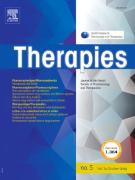Trigger tools to identify adverse drug events in hospitalised children: A systematic review - 27/09/22
 , Catherine Cornu a, b, Roubi Kilo a, c, Aurélie Portefaix a, b, Beatriz Fretes-Bonett a, Fanny Hergibo d, Behrouz Kassai a, e, Kim An Nguyen a
, Catherine Cornu a, b, Roubi Kilo a, c, Aurélie Portefaix a, b, Beatriz Fretes-Bonett a, Fanny Hergibo d, Behrouz Kassai a, e, Kim An Nguyen aSummary |
Aims |
To identify all available trigger tools applicable to the pediatric population in hospital settings to detect adverse drug events (ADEs) and to describe their performances by positive predictive value (PPV).
Methods |
PubMed® was searched until December 2021. The reference sections were also consulted for new articles. Studies were selected when they used one or more triggers to identify AEs and used data on pediatric inpatient settings. Studies mentioning triggers related to AEs that were only caused by care procedures were excluded. Only triggers related to ADEs were included. PPVs of triggers were reported. Mean PPVs were calculated for multi-study triggers. The interest of each trigger in a real-time detection system was assessed.
Results |
Thirty studies were included. A total of 271 unique triggers were identified, 179 of which were related to drug-induced harms. Among them, 68 could be used for prevention of ADEs, 80 for verification and 31 for reporting. Nineteen triggers (11%) had a mean PPV between 50% and 100%, including 5 that had a 100% PPV.
Conclusion |
The performances of individual triggers need to be more adequately studied. The detection of ADEs through computerized triggers and/or real-time detection systems remains an emerging field, very much needed in children especially, due to frequent off-label use.
Le texte complet de cet article est disponible en PDF.Keywords : Adverse drug event, Trigger tool, Hospitalized children, Detection, Pharmacovigilance, monitoring
Plan
Vol 77 - N° 5
P. 527-539 - septembre 2022 Retour au numéroBienvenue sur EM-consulte, la référence des professionnels de santé.
L’accès au texte intégral de cet article nécessite un abonnement.
Déjà abonné à cette revue ?

